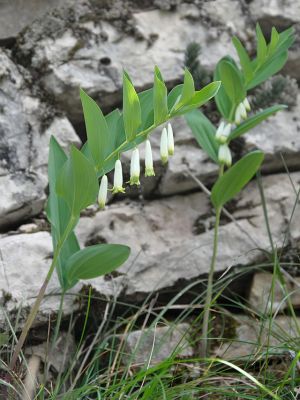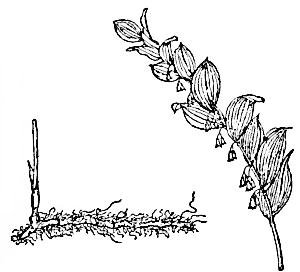[1] Barefoot Doctor's Manual- 1977 Prepared by the Revolutionary Health Committee
of Hunan Province. Original Chinese manual- Victor W. Sidel. Originally published
by Dr Joseph Quin and the Fogarty International centre, Bethdesda (1974). Madrona
Publishers Seattle Washington ISBN 0-914842-52-8
[2] A Complete English Dictionary of Medicinal Terms in Chinese Acupuncture
and Herbalism 1981- Henry Lu Chinese Foundations of Natural Health- The Academy
of Oriental Heritage, Vancouver, Canada.
Images
1.
en.wikipedia.org
by Myrabella CC BY-SA 3.0
2.
[1]
3.
chinese.herbs.webs-sg.comPMID: 22746832 DOI: 10.1080/14786419.2012.701212 Nat Prod Res. 2013;27(12):1111-4.
doi: 10.1080/14786419.2012.701212. Epub 2012 Jul 2. ncbi.nlm.nih.gov
 Polygonatum odoratum. P. officinale
玉
竹 Yù
zhú
Solomon seal
Family: Liliaceae
Polygonatum odoratum. P. officinale
玉
竹 Yù
zhú
Solomon seal
Family: Liliaceae

